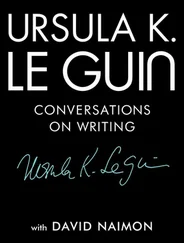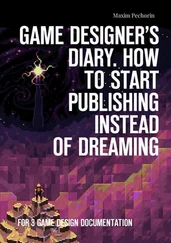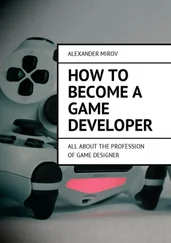Society, said Niklas Luhmann, creates media for the purpose of self-observation. 12Digital games are the youngest means—medium—for such reality construction and, thereby, also for perceiving the world as well as for self-perception. As Noah Wardrop-Fruin writes, games allow us—more so than linear audiovisual media do—“to understand our evolving society, in which (often hidden) software models structure much of how we live now.” 13In the interactive mirror of digital games we experience ourselves and search for an understanding of what is under development in our everyday lives—a digital society and culture just as different from the industrial culture of the 19th and 20th centuries as that culture was distinct from the society and culture of the preindustrial period.
The first part of this book ( I Games ) describes how digital games went from their—audiovisually as well as narratively restricted—beginnings in the middle of the past century to the equally narrative and hyperrealistic medium of today that is able to compete with film and television. The starting point is formed by an analysis of the diverse attempts to define analog as well as digital games ( I-1 What is a game? Systematic and Historical Approaches ). The overview leads to the understanding that, like all media and arts, digital games can only be understood in their historical development. The second chapter, therefore, outlines the history of games in the context of modern media and the arts ( I-2 Games in the Modern Era: A Short Media History ). The broader focus then lies on the three artistic-technical pushes in which digital games have evolved since the middle of the 20th century ( I-3 Procedural Turn, since the 1950s; I-4 Hyperepic Turn, since the 1970s; I-5 Hyperrealistic Turn, since the 1990s ). At the preliminary end of this development, digital games characterize themselves in their otherness in relation to both analog games and linear audiovisions. 14I seek to define this otherness in the sixth chapter ( I-6 The Double Alterity of Digital Games ). A further turn that has been transpiring for several years now has led to the proliferation of natural user interfaces (NUIs) and ‘natural’ ways of interacting with virtual worlds and non-player characters (NPCs). This turn should further strengthen the categorical otherness of digital games ( I-7 A Look Ahead: Hyperimmersive Turn? ).
In the development of digital games, their relation to film has carried a special meaning. Since the 1980s both of these forms of audiovisual media have been engaged in a close technical, economic and aesthetic exchange, while at the same time they have been competing for both consumers and talent. More than a few artists and theoreticians have even envisaged a merging of the two audiovisual media. The Intermezzo: Game // Film first takes stock ( Intermezzo-1 Game and Film ), only to then look back on the earlier audiovisual rivalries between theater and film as well as between film and television and to discuss which of the two historical models the relationship between games and film will most closely come to resemble ( Intermezzo-2 Audiovisual Rivalries ). Foundational for the aesthetic relationship between audiovisual media in general and between games and film in particular proves to be their highly different affordances for the manipulation of time and space in the representation of narrative processes ( Intermezzo-3 Modes of Audiovisual Storytelling ).
MAKING GAMES—GAME DESIGN
Whoever develops digital games today is historically privileged: they are confronted with the opportunity, as only very few generations before them, to actively help shape the important beginnings and to set the course of a radically new medium. Contributing to this opportunity is the fact that since the turn of the century no other medium has made progress that was as speedy—both in an economic as well as a technical-aesthetic respect.
In 2014 digital gaming made up an approximately 86 billion-dollar industry, up from 23.3 billion in 2003 and 52.5 billion in 2009. 15The seven countries with the highest game revenues were the US (22 billion), China (18 billion), Japan (12 billion), South Korea (3.8 billion), Germany (3.6 billion), the UK (3.5 billion) and France (2.7 billion). 16However, there exists a huge international imbalance between production and consumption. Germany, for example, is the largest market in Europe, but non-German companies produced 75% of German revenue. Furthermore, German games make up only three percent of the world market, which is dominated by American productions, followed by games made in Japan, Canada and the United Kingdom. 17
In 2013 the worldwide most successful game was GRAND THEFT AUTO V. On its first day alone it brought in 800 million dollars: “…more money than any movie— Titanic or Avatar or The Avengers —has made in its entire run in North American theaters. And given the game’s $270 million budget, it may also have cost more than any movie.” 18AAA games—meaning digital games that are produced with a large budget and promoted with a great deal of marketing—are even bigger global phenomena than literary bestsellers and movie blockbusters.
Cultural differences among the bestselling games can be seen most clearly in popular sports. In 2013 in the US, for example, MADDEN NFL 25 belonged to the top-five bestselling games with 2.7 million copies sold. 19In Germany, the soccer-simulator FIFA 14 took the top spot in place of the football-simulator with around 870,000 copies sold. 20Certain differences also show themselves in the popularity of platforms and genres. In the US, games played on computers make up only a fraction of total revenue—220 million of the 15.4 billion dollars total brought in by game software in 2013. 21In contrast, in Germany 76% of all gamers sit at a computer. 22However, smartphones enjoy the same amount of popularity in both countries (44% in the US as well as Germany). 23
The demographic data also converge over time if one adopts a long-term perspective. In 2013 59% of Americans played digital games; 52% of these gamers were men and 48% women. 2429% were under 18 years old and 39% over 36. In Germany almost every other person played regularly—the numbers fluctuate between 34.2 million and 39.8 million German gamers. 25The percentage of female gamers in Germany was at 44%. 29% of German gamers were under the age of 18 and 20% over 50. 26
The constant growth—more gamers, more games, higher revenue—, which has characterized the cultural assertion of digital games since the 1970s, occurred in the context of constant change in the requirements of production, distribution, and use. The foundation for this ongoing radical transition was laid with the establishment of first stationary and then also mobile broadband networking. Since the 1990s, the distribution and use of AAA console and PC titles has been virtualized and novel distribution platforms have emerged ( Steam as well as app stores from Apple and Android, among others). In the USA the share of digital distribution rose between 2010 and 2014 from 29% to 52%. 27The introduction of smartphones, starting in 2007 with Apple’s iPhone, and of touch-tablets, starting in 2010 with Apples’s iPad, popularized the new genre of mobile and casual games.
In the last decade, the extreme development of distribution channels for digital games has correlated with equally strong changes in how they are financed. Promoted as well through ubiquitous digital networking, a variety of alternative economic approaches, processes, and funding models came about. Disruptive were, for one, Free-to-Play (F2P) and freemium models, based on micropayments in games that started off free, and for another pre-financing through so-called crowdfunding, i.e., the collecting of a large number of small contributions by future users of technical or medial products that had yet to be produced.
Читать дальше











